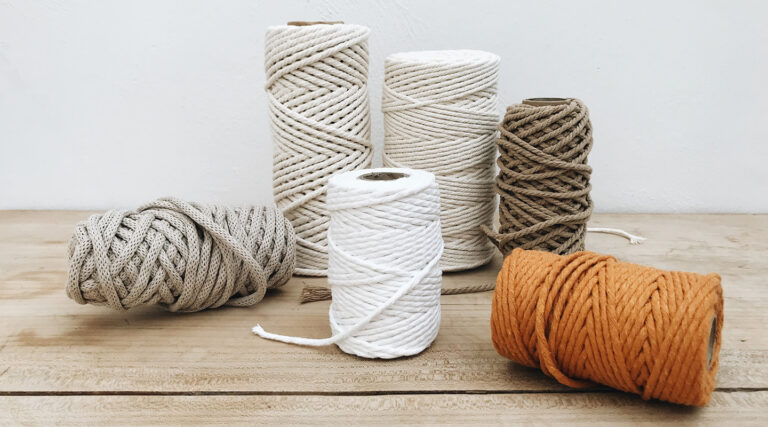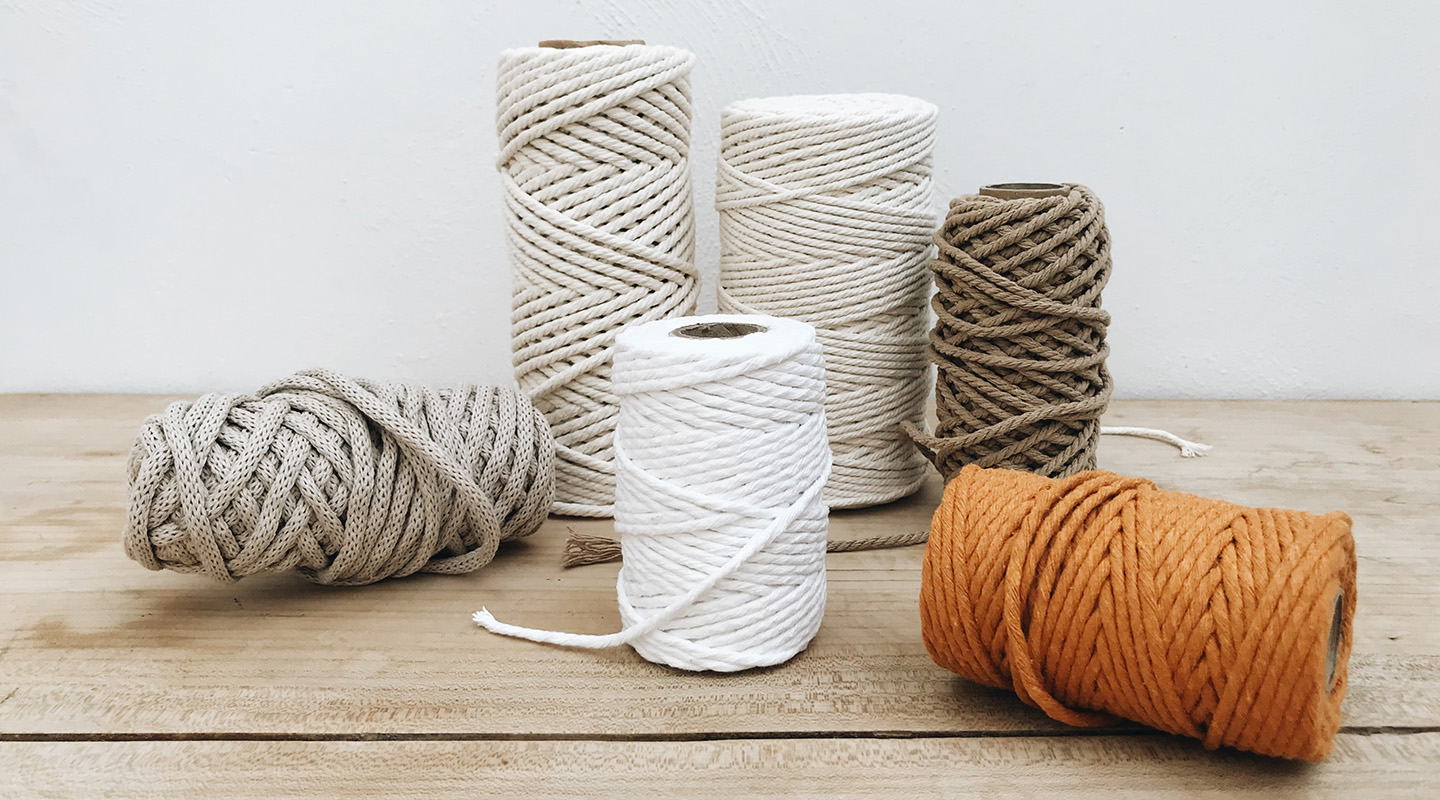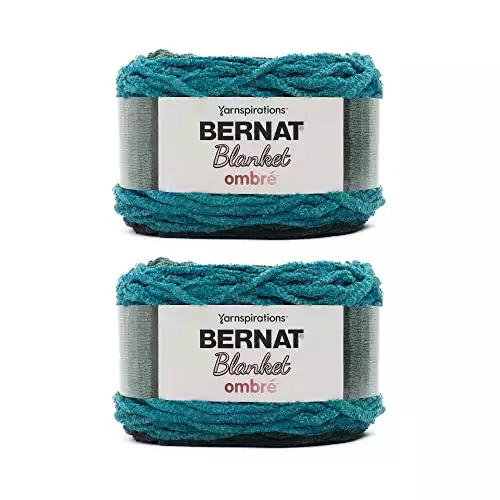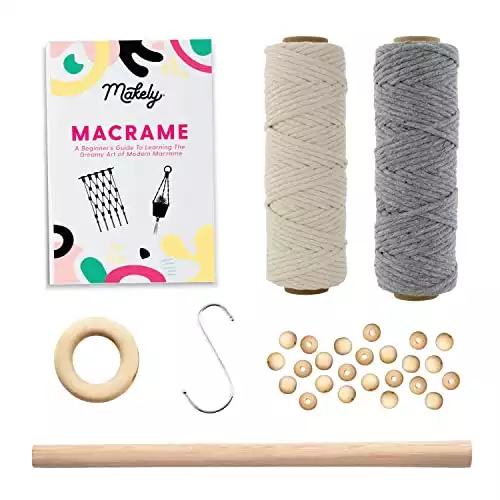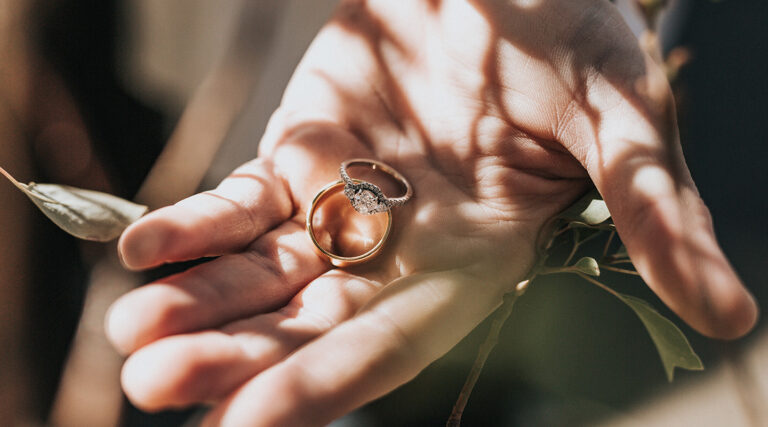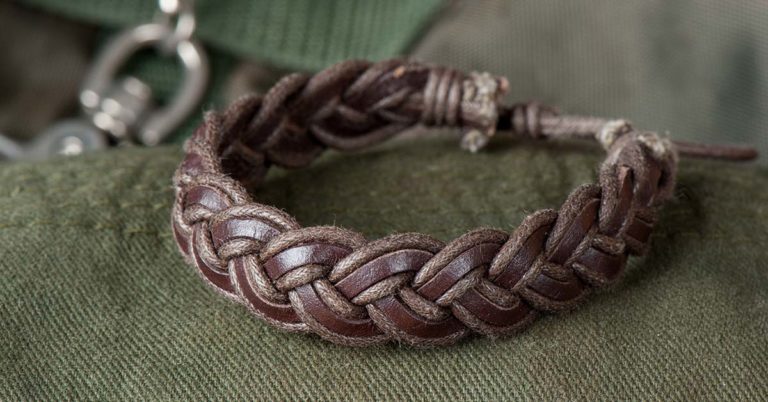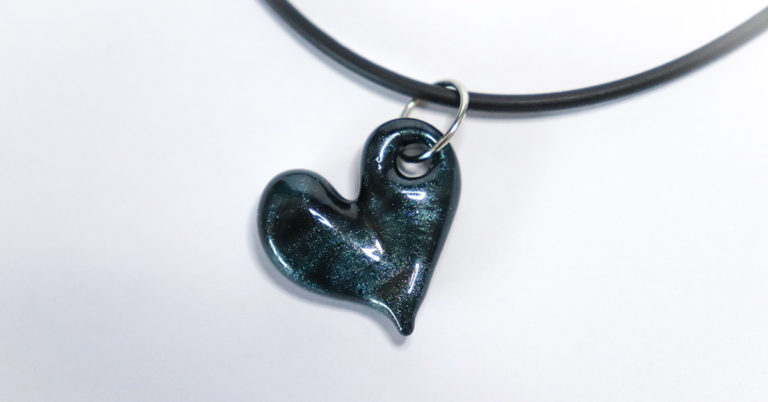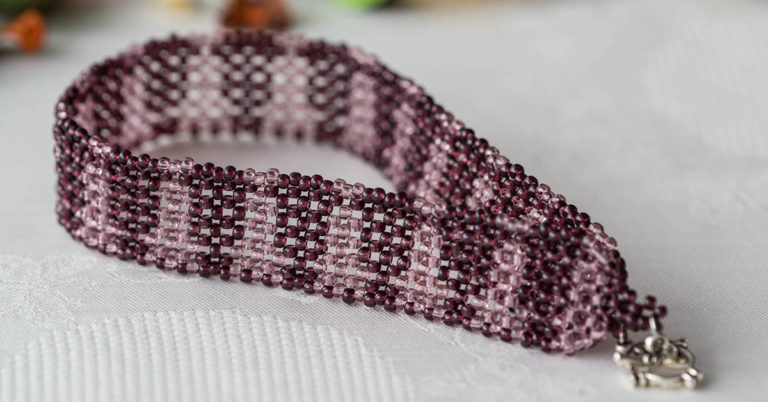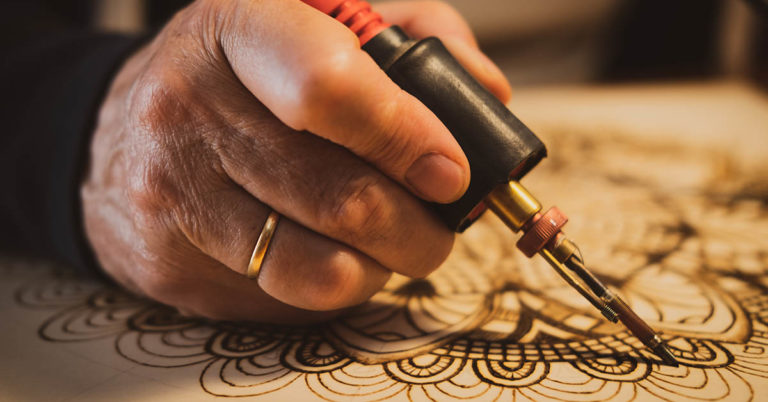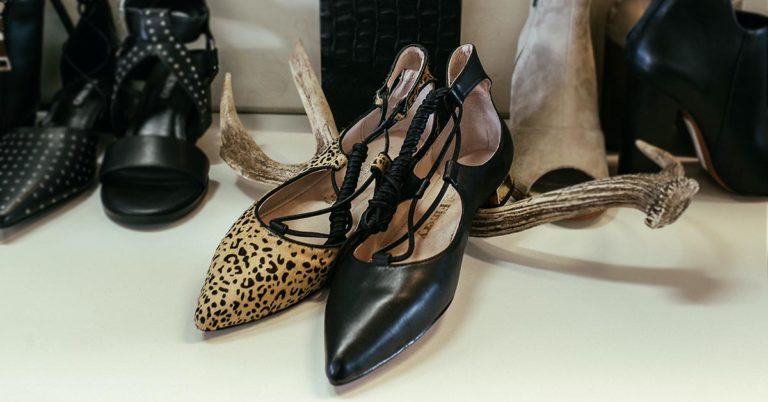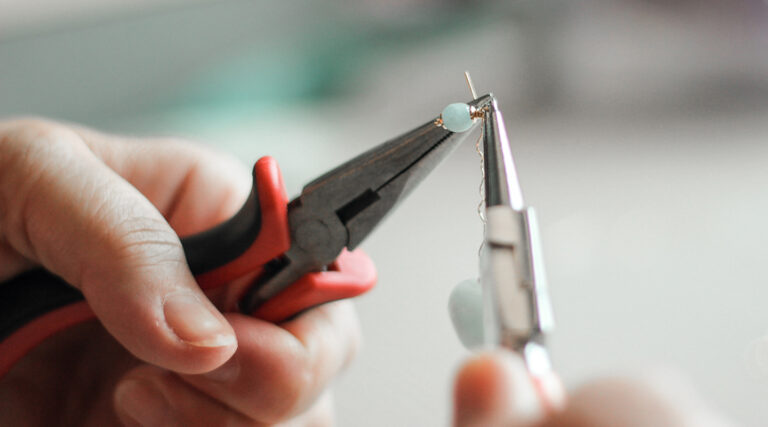The art of Macrame goes back at least to the 13th century, when Arab weavers created decorative fringes along woven textiles like shawls, towels, and veils by knotting the excess threads. Whether you’re an experienced Macrame crafter or a beginner who wants to get started with your own projects, the right cord is essential.
In this Macrame cord guide, we’ll cover everything you need to know about Macrame cord to set you up for success on your next project.
What kind of cord do you use for Macrame?
The art of Macrame revolves around making chains of knots to create textiles and patterns. Therefore, Macrame cord needs to be easy to knot, as well as look good once it has been made into a knot.
The best Macrame cord is also easy to fringe, such as plied rope or fibrous string, as this is a common feature in many Macrame projects.
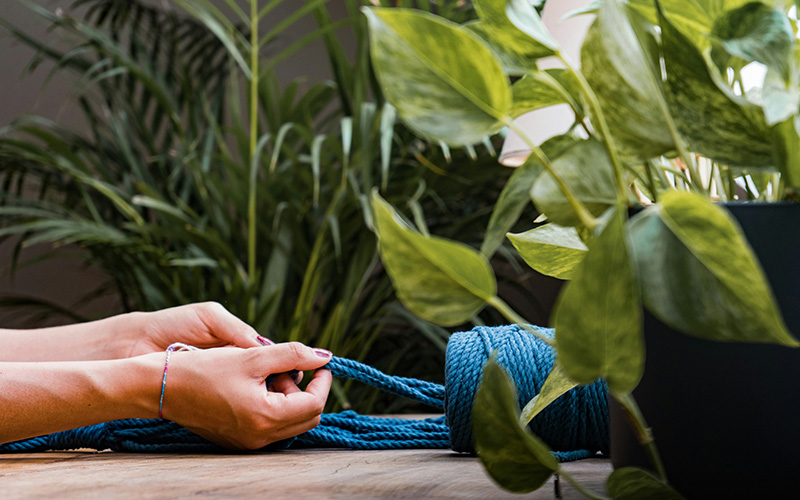
There are many different types of Macrame cord, such as rope, string, yarn, and thread, and each of these can be made of different materials and come in a range of sizes. We’ll take a closer look at the various types in the next section.
Macrame cord can also be waxed to make it easier to work with, and also to prevent fraying and keep the knots neat and smooth. However, not all Macrame cords are waxed.
Waxed cord is most commonly used for making Macrame jewelry, but it’s not essential for these kinds of projects. You can also use any cord you’d like and wax it with a beeswax candle yourself, or work with it unwaxed.
Types of Macrame cord
Macrame is one of the simplest crafts, not only because it’s reasonably easy to learn but also because you need very few materials or tools to do it. Many projects can be created with cord and perhaps a few beads, as well as a couple of basic tools like a pair of scissors and a lighter.
This makes the choice of cord vital, as it’s literally the backbone of your project. In many cases, you can choose whichever type of cord you want for your project, though this can dramatically change the result.
Let’s take a look at the different types of Macrame cords and the pros and cons of each.
Macrame rope
The most common type of Macrame cord, rope is a plied fiber that is available in a range of materials, plies, and thicknesses. The plies, or strands woven around one another, give rope extra strength.
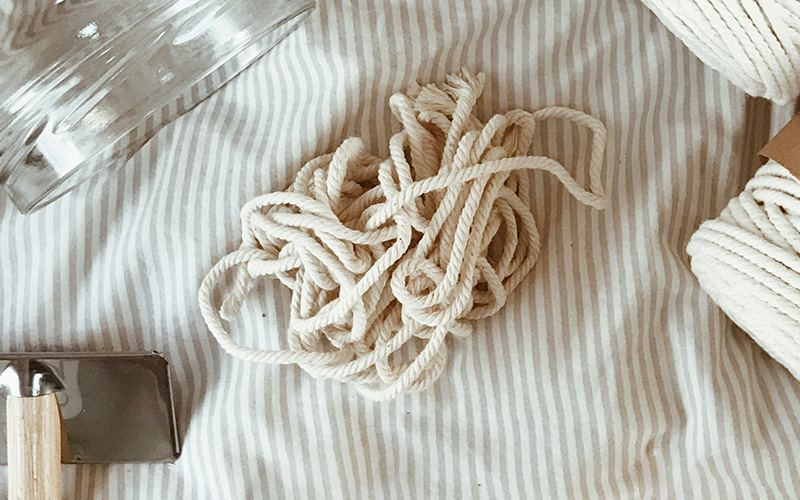
The more plies the rope has, the stronger it will be. For most projects, 3-ply rope is ideal, as this is strong enough and easy to work with, though you can opt for a 6-ply rope if you need extra strength.
You can also comb out the multiple plies in rope to create a fringe, which can be a stunning effect in many different types of Macrame projects, from feather motifs to fringe edging on jewelry, bags, and decorations.
You’ll often find Macrame rope made from cotton, though it’s also available in other materials, such as hemp, jute, and synthetic fibers. Cotton and hemp are both good choices, as these materials are soft, malleable, and strong.
Yarn
Yarn is another great choice for Macrame, though it produces quite a different look. Yarn Macrame is typically softer and fuzzier than projects made with cord or string, and has a retro, boho appeal.
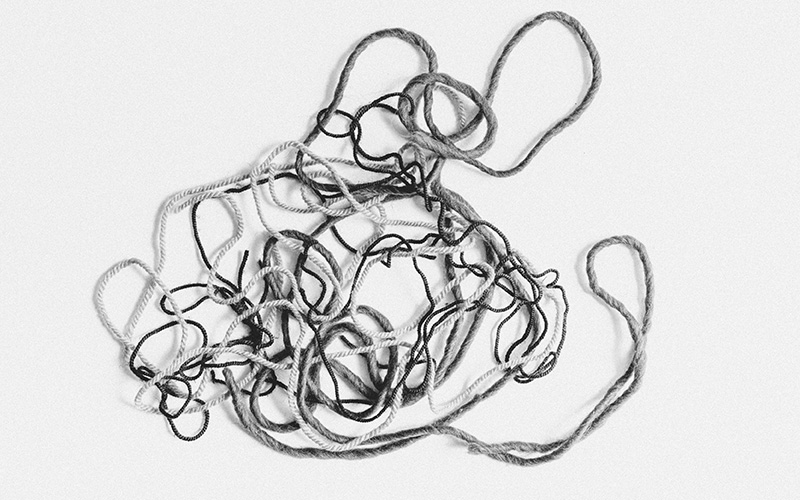
A big advantage of yarn is that it comes in a diverse range of colors made from a variety of materials. You can also find both plied and unplied yarn, giving you more opportunities to create different effects depending on the desired characteristics for your project.
However, it can be trickier to work with, and virtually impossible to use to make small knots.
Macrame string
At first glance, Macrame string may look like rope, and they are very similar. However, there’s one key difference: string is not plied but rather is made of lots of thin fibers twisted into one strand.
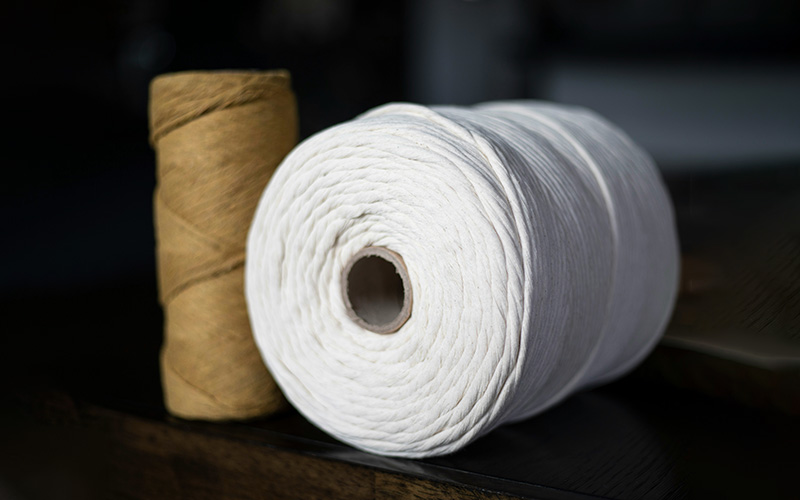
Confusingly, string is sometimes called “single-stranded Macrame rope”, even though it isn’t actually rope.
Because it’s not plied, string is not nearly as strong as rope, and can also be uneven or inconsistent in its thickness. On the upside, being unplied, string is softer, so you can use it to make smaller, tighter knots.
It’s also excellent for fringing, creating a straight, fine fringe as opposed to three-ply rope’s wavier fringe.
Waxed cord
Waxed cord is any type of Macrame cord that is coated in wax to make it stronger, as well as resistant to water.
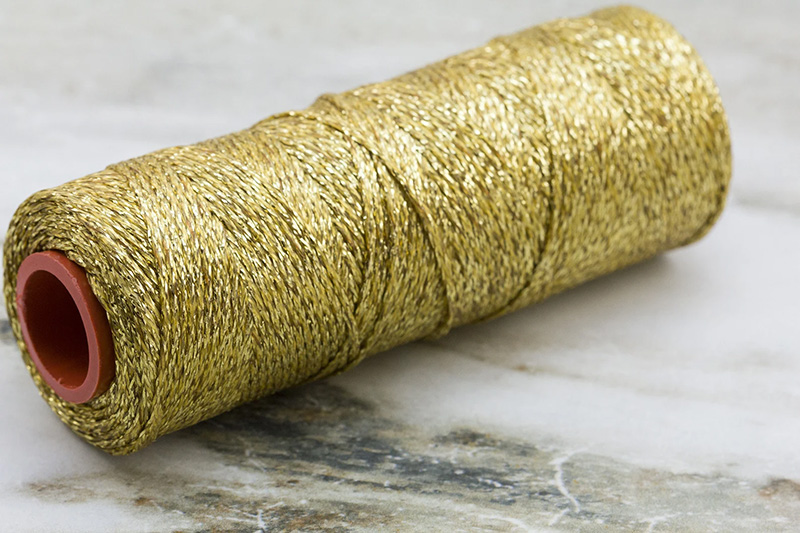
It can be plied or unplied, and is usually thinner than other types of Macrame cord, typically around 1mm. You can find it in a range of materials and colors, though the wax coating makes it darker, and black is most common.
It’s ideal for jewelry, because it’s strong enough to stand up to being worn everyday and won’t degrade from being next to the skin and subjected to sweat.
On the other hand, waxed cord doesn’t have the same aesthetic as softer, more textured Macrame cords, and cannot be fringed, so it isn’t suitable for many decorative projects.
Synthetic vs natural cord
Most of the above types of cords are available in either natural or synthetic materials.
Common natural fibers are:
- Cotton
- Wool
- Hemp
- Linen
- Jute
Generally speaking, natural fibers are soft, cozy, and easy to dye if you want to do this yourself. Many are also eco-friendly, especially organic cotton and hemp, and all will biodegrade.
On the other hand, you’ll also find cords made from synthetic fibers, such as:
- Nylon
- Acrylic
- Paracord
- Polypropylene
- Plastic
Many synthetic fibers are water-resistant, so ideal for outdoor items, jewelry, and accessories. They’re also very strong, and able to maintain that strength even for very thin cords.
However, they’re not as soft and lack the cozy feel of most natural fibers, and can be trickier to work with, especially compared to beginner-friendly cotton cord.
What’s the difference between Macrame cord and rope?
In Macrame, the term “cord” is often used to cover all of the different fibers you can use to make Macrame knots. On the other hand, rope is just one type of Macrame cord: although it is the most common, you’ll also find other types, including waxed threads, yarn, and string.
Macrame string is sometimes referred to as single-stranded rope or cord, even though it’s technically not a rope. String is made from a multitude of very thin fibers twisted together tightly, while rope is made up of three or six plies woven together.
There are three main ways to combine the fibers in Macrame cord:
- Three-ply rope is made up of three strands woven together. It is strong, but not as soft as other types of cord, so it’s harder to make tight knots. Rope is also available in six-ply, and you can get yarn in a wide range of plies.
- Single twist string is made of a single strand of fibers twisted together. This is generally the softest and lightest type of cord that’s commonly used in Macrame and is great for making small, tight knots.
- Braided cord is made up of six strands or more braided together, and was commonly used during the Macrame fad of the 1970’s and 1980’s.
How to choose the best Macrame cord for your project
Now you know the basics of Macrame cords, you’re ready to jump in with your first project! But with so many options available, which cord should you choose?
Materials
Just as there are a range of different types of Macrame cord such as rope, thread, and string, this cord can be made of various materials. Cotton is one of the most common materials used, and cotton rope, in particular, is fantastic for beginners because it’s easy to work with and forgiving of mistakes.
Other excellent materials for Macrame cord include:
- Jute
- Hemp
- Polyester
- Nylon
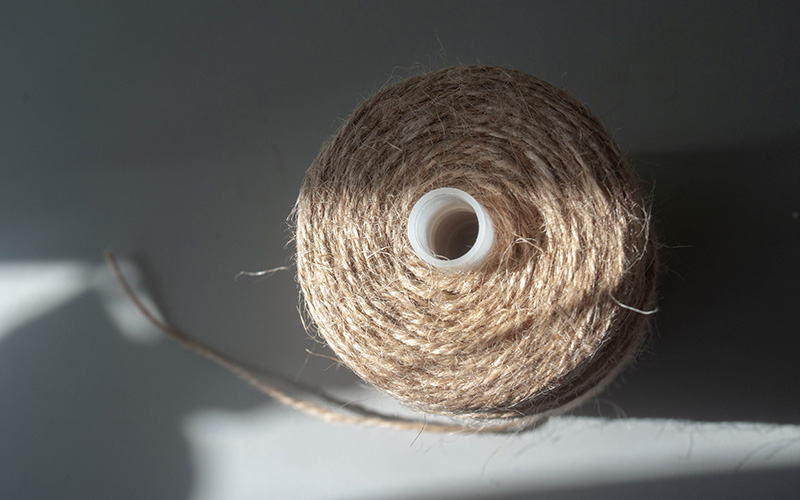
Type
The type of cord you choose will largely depend on the design you want to make, as well as the effect you’re going for.
Most patterns and tutorials will give a recommendation of the size and type of cord you should use for that given project. You can usually swap out the type of cord with virtually any other kind if you want a different aesthetic.
If you’re making a piece of jewelry, a waxed cord made from polyester or nylon is usually best.
One of our favorite waxed synthetic cords is this polyester waxed cord. We also love this waxed metallic cord in no less than 54 colors.
String is good for wall hangings, but not weight-bearing pieces like plant hangers, as it’s less strong because it’s not plied. A soft cotton string like this 3 mm cotton Macrame rope will make it easy to create small, neat knots for decorative pieces.
On the other hand, unplied yarn like this one from Bernat creates a softer, looser effect, so is great for rugs and throws.
Cord mm size
Almost every Macrame pattern and tutorial will start by telling you the size of cord you need, and usually a recommendation for the type of cord to use.
While you can usually change the type of cord you use according to your preferences, it’s easiest to do so if you keep the size of the cord the same.
When buying Macrame cord, always check the cord size: this is usually given in mm, which refers to the diameter, or thickness of the cord. Therefore, the higher the number, the thicker the cord and the larger your final project will be.
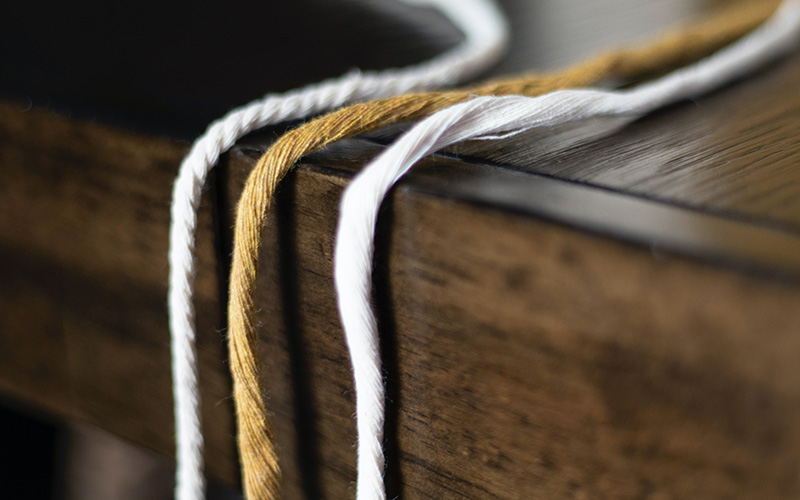
Most Macrame projects use between 1mm and 6mm cord, though more delicate micro Macrame designs may use cord as thin as 0.4mm.
You can opt for cord in a different size, but you’ll need to adapt the cord lengths, so it’s best to only attempt this if you’re more experienced in the craft.
Where to buy Macrame cord
Like many things, these days one of the easiest and most efficient ways to buy Macrame cord is online. You’ll find a wide range of products on Amazon and Etsy, as well as specialty online stores like Modern Macrame and Pepperdell.
Etsy also has a large number of Macrame patterns, supplies and kits, as well as some stunning pre-made Macrame items. Our favorite Etsy stores that sell Macrame cord and other supplies include VeraZey, LoveBeadsCords, and MinkyHandy.
You can also find Macrame cord at local craft shops, as well as big box retail stores.
However, in general, it’s better to buy from a specialty craft store or online retailer, as products are generally much higher quality, and offer better value for money.
Well-known brands that make high-quality Macrame cord include:
- XDOUS
- Sensy
- Bonnie Craft
- G2PLUS
- Klhamky
- Linhasita
Alternatively, you could use a kit with everything you need to complete your project.
FAQs
In case you still have doubts or concerns over which Macrame cord to use, or anything else to do with Macrame cord, we’ve answered some of the frequently asked questions below.
Can you use knitting yarn for Macrame?
Yes, you can absolutely use knitting yarn in your Macrame projects. However, keep in mind that it’s different to work with compared to other common Macrame cords, such as Macrame rope or string, so it will produce a different aesthetic and may not be suitable for all projects. Generally speaking, yarn is best for soft items like blankets and not ideal for wall hangings or decorative pieces.
Is Macrame cord waterproof?
This depends on the type of Macrame cord and the material it’s made of. Most synthetic Macrame cords, such as nylon and polyester, are waterproof and can be used to make outdoor items like plant holders and lawn furniture covers.
Waxed Macrame cord is at least water resistant or at least waterproof, so is excellent for jewelry and other items worn close to the skin.
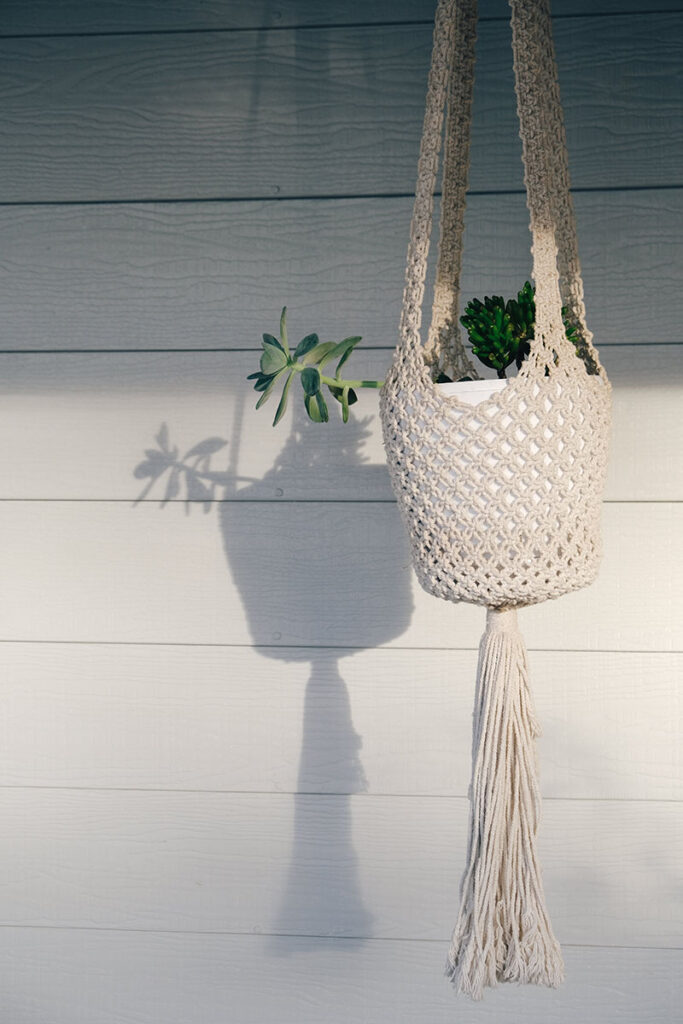
Is Macrame cord suitable for crochet?
Yes, you can not only use Macrame cord for your crochet projects, but it works very well for this form of craft. The qualities of Macrame cord make it ideal for creating crochet bags, purses, jewelry, accessories, and rugs.
Is hemp a good choice for Macrame cord?
Yes, hemp makes an excellent cord for Macrame: it’s strong, malleable, easy to work with, and environmentally friendly. The only drawback is that hemp can fray easily, so you may need to tidy up the ends with scissors when finishing your project.
What’s the difference between Macrame and crochet
Both Macrame and crochet involve creating a series of knots from some kind of cord, and the results can look similar. The main difference is that with Macrame, you work with your hands, while in crochet you use a specific type of hook. For this reason, some people consider Macrame to be simpler than crochet, and it’s certainly easier to undo a knot in Macrame if you make a mistake.
Wrapping up
Macrame is one of the simplest crafts there is: for many projects, all you need is some cord and your hands. However, this is what makes cord so essential – Macrame is all about the cord, so it’s important to choose the right type, material, and size for the design you want to make.
There are a wide range of cords available, from rope and string to waxed cords, in natural and synthetic materials.
Once you’ve read this Macrame cord guide, got your cord and you’re ready to make some awesome Macrame projects, take a look at our guides on macrame kits, macrame bracelets, and macrame jewelry for project inspiration.

